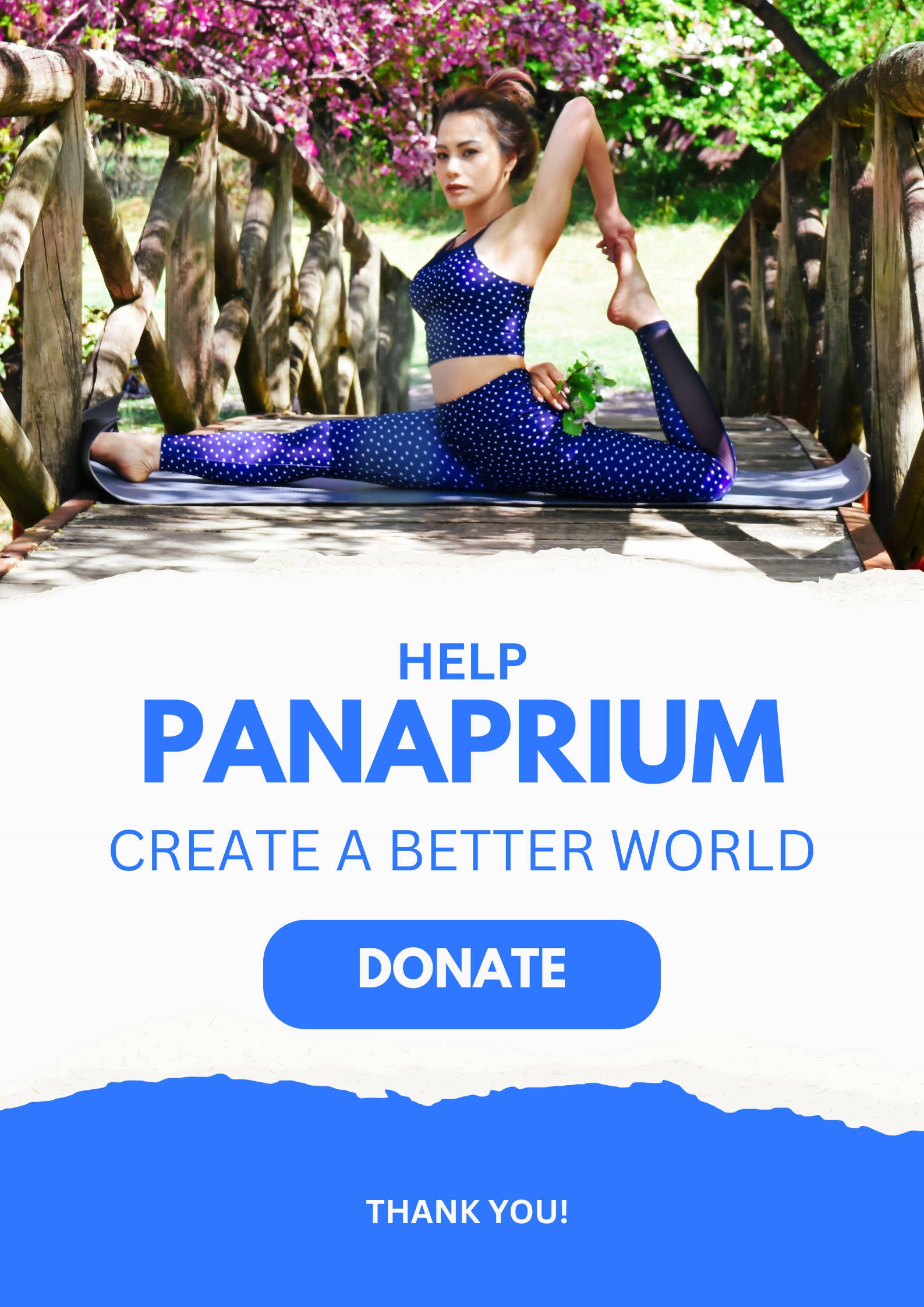
Piñatex is a pioneer in leather alternatives made from cellulose fibers extracted from pineapple leaves. The material is a synthetic leather made from pineapple waste, much more ethical than real leather made from animal skins.
Many fashion companies use affordable and vegan leather alternatives today. Most artificial leathers contain polyurethane (PU), a thermoplastic polymer, completely synthetic and cruelty-free.
Ananas Anam is the company behind Piñatex, producing leather-like fabrics from pineapple leaf fiber, polylactic acid (PLA), and petroleum-based resin.
Piñatex pineapple leather is already used today by fashion giants like H&M, Hugo Boss, and Paul Smith. More than 500 manufacturers have used Piñatex since its commercial launch in 2015.
The material isn't 100% sustainable but a lot more ethical and environmentally friendly than conventional leather.
The pineapple industry harvests about 27.5 million tons of pineapples and generates over 76 million tons of waste pineapple leaves each year globally.
Pineapple leather allows farmers to generate additional income by sorting and selling long leaves suitable for fiber production, instead of burning them or leaving them to rot.
Here is everything you need to know about Piñatex pineapple leather and how it fares against real leather and other leather alternatives.
Panaprium is independent and reader supported. If you buy something through our link, we may earn a commission. If you can, please support us on a monthly basis. It takes less than a minute to set up, and you will be making a big impact every single month. Thank you!
What is Piñatex pineapple leather?
Piñatex pineapple leather is an artificial or semi-synthetic leather made from pineapple waste. The innovative fabric made from cellulose fibers extracted from pineapple leaves offers an ethical alternative to real leather.
Polyurethane is a widely used alternative for real leather, man-made, and animal-friendly. However, PU leathers, or polyurethane leathers, are artificially-made, petroleum-based, and completely synthetic.
Piñatex uses the waste parts of pineapple plants to improve farmers' income and promote the circular economy.
Dr. Carmen Hijosa first presented Piñatex in 2015 at the Ph.D. graduate exhibition at the Royal College of Art, London, after spending seven years developing it.
She decided to create Piñatex after working as a consultant in the leather goods industry in the Philippines in the 1990s.
She was shocked about how leather production is environmentally unsustainable and damaging to the people involved in the industry.
“It seems that it is the right product at the right time because we are getting constant demand from all levels of the market–from multinationals to specialist stores, early adopters, and vegan companies looking for alternatives to leather. We’re starting to get out there in the market.”
- Dr. Carmen Hijosa, Ananas Anam founder, and Chief Executive Officer
On the other hand, pineapple is one of the most productive tropical fruits in the world. One acre of pineapple plantation can produce 20,000 fruits every 15 months.
But pineapple only flower and fruit once, so the plant and its leaves are a waste product after harvest.
Taking the long fibers from pineapple plants, Dr. Carmen Hijosa's company Ananas Anam extracts fibers from the leaves to create a versatile leather-like material widely used in the fashion industry today.
Piñatex fabric uses

Piñatex pineapple leather makes great shoes, bags, wallets, clothes, accessories, and upholstery. Many manufacturers use Piñatex to create household items or garments for the fashion industry.
In the textile and apparel industry, you can usually found Piñatex leather in the same applications as real leather.
Many fashion brands around the world choose Piñatex fabrics to create ethical and cruelty-free clothes, such as coats, jackets, blazers, shirts, pants, parkas, vests, skirts, dresses, and more.
Ananas Anam first developed Piñatex in the Philippines but plans to implement its production wherever pineapple cultivation occurs, such as Costa Rica, Colombia, Brazil, South Africa, Taiwan, and more.
Piñatex also makes beautiful and resilient furniture, seats, sofas, cushions, upholstery, drapes, home decor, curtains, and more.
As new apparel and home furnishing applications develop, the market for Piñatex fabrics is expected to rise in the coming years.
Piñatex is not only an ethical material for developing farming communities but also a more sustainable alternative to mass leather production.
What's wrong with real leather

Leather is a material made from the skin of animals and commonly used for fashion. The industry brutally slaughters billions of animals every year to make clothes, shoes, handbags, and other accessories.
The leather industry also kills many other types of animals, such as seals, sheep, deer, alligators, snakes, zebras, sharks, even cats, and dogs.
It even traps and kills endangered species. The leather trade threatens many animals that should be protected, including a vast number of reptiles, kangaroos, ostriches, beavers, wild cats, bears, antelopes.
To produce leather, animals suffer immense pain. They are trapped, caged, and often skinned alive. They lived in inhumane conditions, in crowded environments, deprived of liberty, and subjected to painful treatments.
Leather tanning is also damaging to the environment, ecosystems, and human health.
The processing of animal-derived textiles requires tons of harmful chemicals that pollute rivers, water sources, and soils as they are often released untreated into the nearby environment.
Leather isn't just a byproduct of animals slaughtered for their meat. Buying leather goods doesn't prevent waste from the meat industry. The leather industry is already very lucrative on its own.
Skins and hides are the most valuable parts of animals, as reported by Bloomberg. Very young animals that have smooth skin, no scratch or parasite yet make the highest quality and most expensive leather.
Fortunately, more and more conscious consumers around the world avoid clothes, bags, shoes, and accessories made from animals. They choose cruelty-free alternatives, such as Piñatex pineapple leather made from natural resources.
What we choose to wear has enormous social and environmental impacts. Animal-derived materials are unethical and cause irreversible damage to the environment and human health.
Fashion can be stylish, high-quality, affordable, and animal-free. No animal should have to suffer to make beautiful and functional clothes. Animal cruelty has no place in modern society.
How is Piñatex pineapple leather produced?
Pineapple leaves are a byproduct of existing agriculture and create an additional income stream for farming communities. It takes about 460 leaves to make one square meter of Piñatex fabric.
Ananas Anam reveals that the top 10 producer countries could theoretically replace over 50% of global leather production. The company currently has facilities in the Philippines, Spain, and the United Kingdom.
Decortication is the first process of Piñatex pineapple leather production. Farmers extract long pineapple fibers from pineapple leaves mechanically on the plantation, without additional water.
Ananas Anam developed the first automated decorticating machine to help farmers process higher quantities of waste pineapple leaves.
After extraction, they convert the leftover biomass into nutrient-rich natural fertilizer or biofuel as another source of income.
Local pineapple farming communities profit from the processing of waste pineapple leaves.
The resulting pineapple fibers are then washed and dried.
Enzymes remove gum or pectin from the fibers to minimize effluent. Pectin is the component that makes natural fibers stiff. The fibers become soft and breathable after processing.
They are then felted to produce a non-woven mesh textile. Felt is a textile material produced by matting, condensing, and pressing fibers together. The fiber net is united by mechanical, thermal, and chemical processes.
The material is then shipped to Spain to receive a special finishing that will give it a leather-like appearance and hand feel.
The textile is washed, dyed, and placed into a non-biodegradable, petroleum-based resin bath to increase durability.
Manufacturers purchase Piñatex on standard rolls to use it as a raw material in clothing, footwear, accessories, and household items production.
Pineapple leather properties

Pineapple leather is cheap, soft, lightweight, flexible, and can be easily printed on, stitched, embossed, embroidered, and cut for different design uses.
The leather-like material is easy to care for, strong, durable, and considered environmentally friendly. It's available in a wide variety of styles, patterns, colors, and finishes.
The material is vegan, ethical, fair, cruelty-free, sustainably sourced, and contains no harmful chemicals. It's a non-woven innovative textile made from natural pineapple leaf fibers.
Piñatex is a greener and animal-friendlier alternative to leather and petroleum-based materials. But it isn't 100% biodegradable.
Pineapple leather is water-resistant and versatile. Piñatex has passed the ISO international standards tests for abrasion resistance, seam rupture, tear resistance, tensile strength, light, and colorfastness.
Piñatex is a unique material with unique properties. It looks and feels like luxurious leather, very pleasant to the touch, with good resistance to wrinkling and pilling.
Like over semi-synthetic materials, Piñatex is resistant to moths and mildew. It has multiple sheens and color options but loses longevity when exposed directly to UV and sunlight.
Piñatex advantages and disadvantages

Some of the advantages of pineapple leather compared to real leather are:
- Affordable
- Lightweight
- Easy to care for
- Water-repellant
- Cruelty-free and vegan
- Very versatile
- Strong and durable
- Good tensile strength
- Good resilience
- Good durability
- Moth and fungus resistance
- High comfort and softness
- Luxurious look and hand feel
- Good pilling resistance
- Good wrinkle resistance
- More sustainable than real leather
The main drawbacks of using Piñatex fibers are:
- Low heat resistance
- Low thermal stability
- Low elasticity
- Low abrasion resistance
- Low chemical protection
- Low resistance to UV and sunlight
- Low breathability
- Not biodegradable
- Fade and dry out over time
- Easily damaged
- Doesn't last decades like real leather can
How to care for Piñatex leather

Taking good care of your clothes is one of the best ways to live more sustainably and ensure that they last longer. Give special attention to Piñatex pineapple leather, as the material is delicate and easily damaged.
Extend the life of your clothes and the time you can wear them by taking good care of them and avoiding common mistakes. You can limit pressure on natural resources, reduces waste, pollution, and emissions.
Waxing
Wax your Piñatex items before use and thereafter regularly by using natural wax to keep them in great condition. Waxing the material adds protection and a soft patina.
After waxing, leave the product in a warm place for at least a day before use. Then rub it gently with a soft cloth.
Washing
Before washing Piñatex fabrics, read the care instructions that can be found on the care tag. This way, you can easily determine if the Piñatex item is washable.
Pure Piñatex leather generally needs to be hand washed. Use a damp soft cloth or sponge to clean any soiling in cold water.
To preserve the quality of your garment, it's best to wash clothes made of Piñatex with cold water. It saves energy and prevents fabrics from melting.
Do not place Piñatex fabrics in the washing machine.
Don't use any chlorine-based or strong detergent either.
To avoid dye bleeding, make sure to soak the fabric for the least amount of time.
Drying
The more sustainable way of drying your clothes is to hang them to dry.
Do not dry Piñatex pineapple leather in a tumble drier. They have very low thermal resistance and will melt under high temperatures. The material dries out if you use heaters or similar hot items.
Place them on a line in fresh air rather than using a dryer. It preserves the quality of your garments and saves an enormous amount of energy, carbon emissions, and money.
You can also lay the fabric down on a towel for a while, then flip it over. Or you can hang it up on a hanger to help it dry naturally.
Ironing
Ironing Piñatex will damage the fabric. The material can easily melt, fade, and dry out.
Only iron your clothes when it's necessary and through a damp cloth.
Always select the lowest temperature possible to prevent any damage.
Storage
Piñatex doesn't resist chemicals very well. Keep chemical-based glues, perfume, and nail polish remover, and alcohol-based solvents far away from clothes made of modal textiles.
Don't use acetone or organic solvents to remove stains either. They will dissolve the fibers and cause irreversible damage to the garment.
Is pineapple leather sustainable?

Pineapple leather is more sustainable than real leather and other petroleum-based alternatives such as polyurethane leather.
Plastic-based fake leathers are still popular because they are durable and very cheap to manufacture.
But as conscious consumers become more interested in how their clothes are made, Piñatex is bound to have a bright future.
“Within a fast-evolving fashion industry which is more and more driven by the success of fast fashion brands, production keeps accelerating and puts the priority on quantity rather than quality. However, trend analysis tends to show a change in customers’ mindset… people pay more and more attention to who, how, where, and when the clothes we wear are made.”
- Dr. Carmen Hijosa, Ananas Anam founder, and Chief Executive Officer
Ananas Anam is now a certified Benefit Corporation. Benefit Corporations and B Corps are businesses and organizations with very high social and environmental performance.
The B Corp certification attests that operations and business models affecting employees, society, the environment, and customers meet the highest standards.
Piñatex requires fewer resources to produce than animal-derived leather, including land, water, chemicals, and energy. It has many environmental benefits such as reduce carbon emissions and pollution.
It also avoids the use of toxic chemicals and heavy metals used in animal leather production and has none of the wastage of leather caused by the shape of the animal's skin.
However, Piñatex pineapple leather isn't 100% biodegradable. The base material is made from 80% pineapple leaf fiber and 20% polylactic acid (PLA), a vegetable-based plastic or bio-plastic material made from corn starch.
Piñatex also receives a protective coating made of waterborne polyurethane resins. They are petroleum-based polyurethane resins that use water as the primary solvent.
Petroleum-based thermoplastic polymers such as polyurethane generally aren't biodegradable. Polyurethanes require a unique set of design rules and properties to be biodegradable, according to the latest research.
They need biocompatible components, bioactivity, and a high degradation rate to decompose quickly. They are typically prepared from polyester polyols, aliphatic diisocyanates, and chain extenders.
Luckily, Ananas Anam uses REACH-compliant ingredients to manufacture Piñatex. REACH (EC 1907/2006) is a set of regulations in the European Union that improves the protection of human health and the environment.
The company is also working on a biodegradable formulation that will make Piñatex truly sustainable.
Ethical fashion brands using Piñatex leather

Many sustainable fashion brands now use Piñatex leather in their new collections.
They design, manufacture, and market high-quality clothing, footwear, and accessories made of ethical leather alternatives, such as Piñatex.
But sustainable fashion isn't only about material sourcing. It's also important that brands and retailers guarantee substantially fair, ecological, and resource-efficient manufacturing conditions.
Here are some of the best sustainable fashion brands using Piñatex pineapple leather:
- Svala, world-class sustainable vegan handbags, and accessories, handcrafted locally and ethically in downtown Los Angeles, with the best materials.
- Lo Neel, a French brand making vegan clothing and accessories, that respects people and the planet.
- No Saints, an animal-free sneaker brand that creates shoes in Portugal with premium materials.
- NAE Vegan Shoes, ethical, vegan, and eco-friendly flats, shoes, sneakers, sandals, boots, heels, and accessories.
- Vegetarian Shoes, a British footwear brand creating ethical, quality animal-friendly shoes, boots, casuals, and trainers for men and women.
- Eve And Adis, a German lifestyle brand of fair and sustainable accessories made of natural materials.
Was this article helpful to you? Please tell us what you liked or didn't like in the comments below.
About the Author: Alex Assoune
What We're Up Against
Multinational corporations overproducing cheap products in the poorest countries.
Huge factories with sweatshop-like conditions underpaying workers.
Media conglomerates promoting unethical, unsustainable products.
Bad actors encouraging overconsumption through oblivious behavior.
- - - -
Thankfully, we've got our supporters, including you.
Panaprium is funded by readers like you who want to join us in our mission to make the world entirely sustainable.
If you can, please support us on a monthly basis. It takes less than a minute to set up, and you will be making a big impact every single month. Thank you.


































0 comments